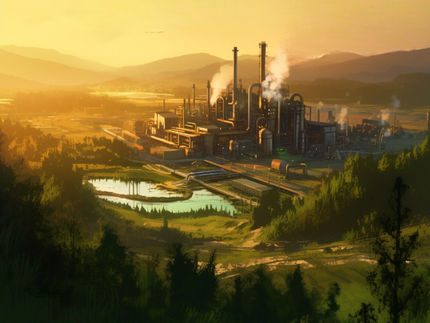LANXESS and TotalEnergies to cooperate on sustainable styrene
Target 2050: Fully climate-neutral raw materials
Specialty chemicals company LANXESS and French energy group TotalEnergies have entered into a cooperation on the supply of biocircular styrene. Unlike conventional styrene, the raw material used by TotalEnergies is based on tall oil, which is derived from a tree resin and is a by-product of pulp production. LANXESS uses the styrene to produce sustainable ion exchange resins. These products are applied primarily in the treatment of wastewater and chemical process flows as well as in the food industry.

Symboic image
pixabay.com
The sustainable origin of the styrene is certified in accordance with the mass balance approach of the ISCC PLUS standard (“International Sustainability and Carbon Certification”). Under mass balance approach, the certified and non-certified materials are mixed physically, but kept separately on a book keeping basis. This method allows companies to document and track the sustainable materials through the complex production process and ensures the full tracibility through the entire supply chain. The ISCC PLUS certification of the styrene is an important requirement, as LANXESS offers its products in accordance with this certification standard as well and therefore relies on the same transparency for its raw materials.
“Our customers are increasingly asking for sustainable solutions, and raw materials with a low carbon footprint are a key lever here. By partnering with TotalEnergies, we can further expand the respective offering for our customers,” says Marcel Beermann, Head of Global Procurement & Logistics at LANXESS.
“We are pleased to form this partnership with LANXESS, which demonstrates TotalEnergies’ ability to offer sustainable products to its customers, helping them reduce their carbon footprint. This is a perfect illustration of the orientation taken by the Refining and Chemicals branch of TotalEnergies to develop lower carbon intensity products, in line with TotalEnergies’ Climate Ambition to get to Net Zero emissions by 2050, together with society,” declares Jean-François Renglet, Vice President Marketing Base Chemicals Division at Total Refining and Chemicals.
In addition to styrene, the specialty chemicals company already sources many other sustainable equivalents of fossil raw materials. Biocircular acrylonitrile is used for another type of ion exchange resins. The preservative Preventol is also available with various fatty acid mixtures based on sunflower oil. Prepolymers under the Adiprene Green brand contain starch-based polyether polyols. The intermediate Trimethylpropane Scopeblue consists of about half sustainable N-butylaldehyde. The composite Tepex Scopeblue is based on flax and polylactic acid. And the high-performance plastic Durethan Scopeblue uses biocircular cyclohexane and waste glass.
Goal: climate-neutral along the entire value chain
In August of last year, LANXESS announced its plan to make its upstream and downstream supply chains climate-neutral by 2050 (Scope 3). This includes indirectly generated emissions, particularly in purchased raw materials, but also in logistics and end products. For direct emissions in production (Scope 1) and energy sources (Scope 2), LANXESS had already set a target three years ago of being climate neutral by 2040.
The Science Based Targets Initiative (SBTi) had previously confirmed that LANXESS’s climate targets are in line with the Paris Climate Agreement.
To achieve its Scope 3 targets, LANXESS has launched the Net Zero Value Chain Program. One pillar of the program is the increased sourcing of sustainable raw materials that are bio-based, originate from a recycling process or are produced with renewable energy. LANXESS is also pursuing plans for “green” logistics and a growing portfolio of climate-neutral products.
Other news from the department business & finance

Get the chemical industry in your inbox
By submitting this form you agree that LUMITOS AG will send you the newsletter(s) selected above by email. Your data will not be passed on to third parties. Your data will be stored and processed in accordance with our data protection regulations. LUMITOS may contact you by email for the purpose of advertising or market and opinion surveys. You can revoke your consent at any time without giving reasons to LUMITOS AG, Ernst-Augustin-Str. 2, 12489 Berlin, Germany or by e-mail at revoke@lumitos.com with effect for the future. In addition, each email contains a link to unsubscribe from the corresponding newsletter.

























































